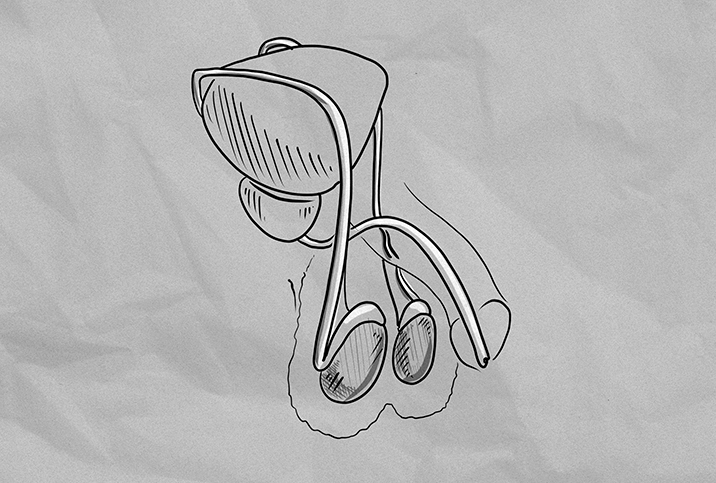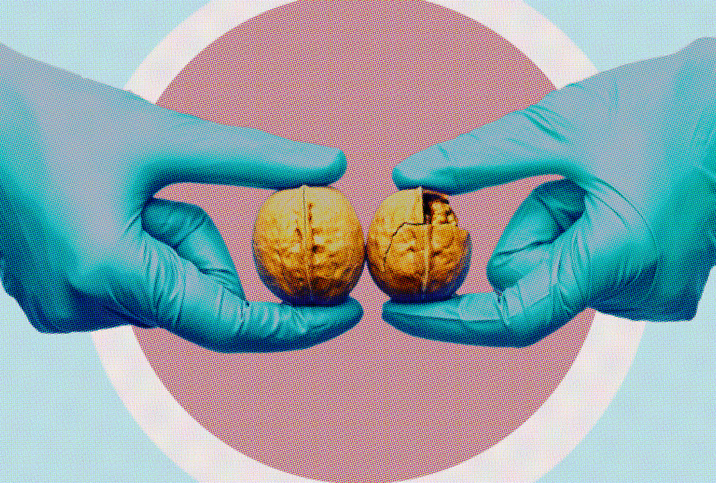Spotting Testicular Cancer Early Can Reduce Harmful Monitoring Scans

It's probably not surprising to hear that spotting cancer early can raise chances of survival, since smaller, localized masses targeted before they grow and spread throughout the body can be treated more effectively. But identifying cancer early doesn't just increase survival rates; it may help you avoid radiation exposure from ongoing monitoring and cut down on your risk of other malignancies later in life.
The impact of early diagnosis
With testicular cancer, the five-year relative survival rates are generally very high—99 percent in localized cancers, in fact—but finding testicular cancer early determines what kind of treatment is necessary. For instance, if it's found when it's still only a small mass confined inside the testicle, surgical removal of the affected testicle is typically all that's needed. Cancer found later, when it has already spread to other organs in the body, will require testicle removal and additional treatment, often including radiation therapy and chemotherapy treatment.
Przemyslaw Twardowski, M.D., director of clinical research in the Department of Urology and Urologic Oncology at Saint John's Cancer Institute in Santa Monica, California, explained that even standard chemotherapy treatment is "pretty significant" in terms of side effects and impact on someone's life, so detecting testicular cancer early enough to avoid chemo is highly beneficial. However, an early diagnosis can also equate to fewer monitoring scans during the course of initial detection, treatment and ongoing follow-ups.
The risk of monitoring scans
Why worry about monitoring scans? Well, it's because the primary scans used to detect and monitor testicular cancer are computed tomography (CT) imaging, which beams X-rays through the body to create a layered image and identify abnormal structures such as tumors and cancer cells. X-rays are a form of radiation and may pose potential health risks, such as causing other types of cancers, including thyroid cancer and leukemia, down the road. It's generally accepted that for most people and for most medical diagnostic purposes, any risk that the radiation in CT scans will lead to any other adverse health effects is very small.
The American College of Radiology issued a statement on the link between CT scans and cancer, and explained that there isn't one known "safe" number of CT scans or radiation dosage amount that you can receive; the risk-benefit scenario is different for everyone. However, in general, the more radiation you are exposed to through CT scans, the more that risk increases. So, if you are able to limit your exposure to CT scans by detecting testicular cancer early, you may reap the benefits of not only a less-invasive treatment regimen, but also fewer monitoring scans during the course of your treatment and follow-up visits. And fewer monitoring scans equals less risk of any additional radiation exposure.
Twardowski explained that there is no scenario with testicular cancer where CT scans can be totally avoided, but an early diagnosis could help decrease the frequency and duration of scans. For instance, he said an early-stage testicular diagnosis typically will require around four CT scans in the first year after diagnosis, then two per year in the second and third years, along with follow-up scans in subsequent years.
"All in all, you're looking at probably around six to 10 scans with stage 1 testicular cancer," he noted.
Metastatic testicular cancer, which has already spread to other parts of the body, by comparison will most likely at least double the number of scans that are needed, Twardowski said.
How to identify testicular cancer early
While detecting testicular cancer early undoubtedly comes with benefits, actually doing so can be tricky. As Twardowski pointed out, because testicular cancer tends to occur most often in young and middle-age men—33 is the average age at time of diagnosis—it can be difficult to identify.
"There is a lot of delay in diagnosis," he explained. "Nobody thinks it could be something serious at that age."
The best strategy, he said, is for men to get in the habit of performing testicular self-exams every month or so. He explained that to perform the self-exam, simply feel the testicles with the fingertips, noting the normal consistency of the testes so anything abnormal could be identified.
"What you're looking for is nodular structures," Twardowski explained. "Cancer would present as a hard, rock-like structure in testicles. Most of the time, it's painless but it feels very firm." He also added that symptoms such as pain or swelling in the testes should be evaluated by a physician.
Along with early detection, advancements in imaging may develop to minimize any risks to individuals with testicular cancer. For instance, some preliminary studies on MRIs (magnetic resonance imaging) have found it to be a promising tool for testicular cancer monitoring, and Twardowski noted that it may be used more in the future as an alternative to CT imaging with far fewer risks since it relies on radio waves, not radiation.

















